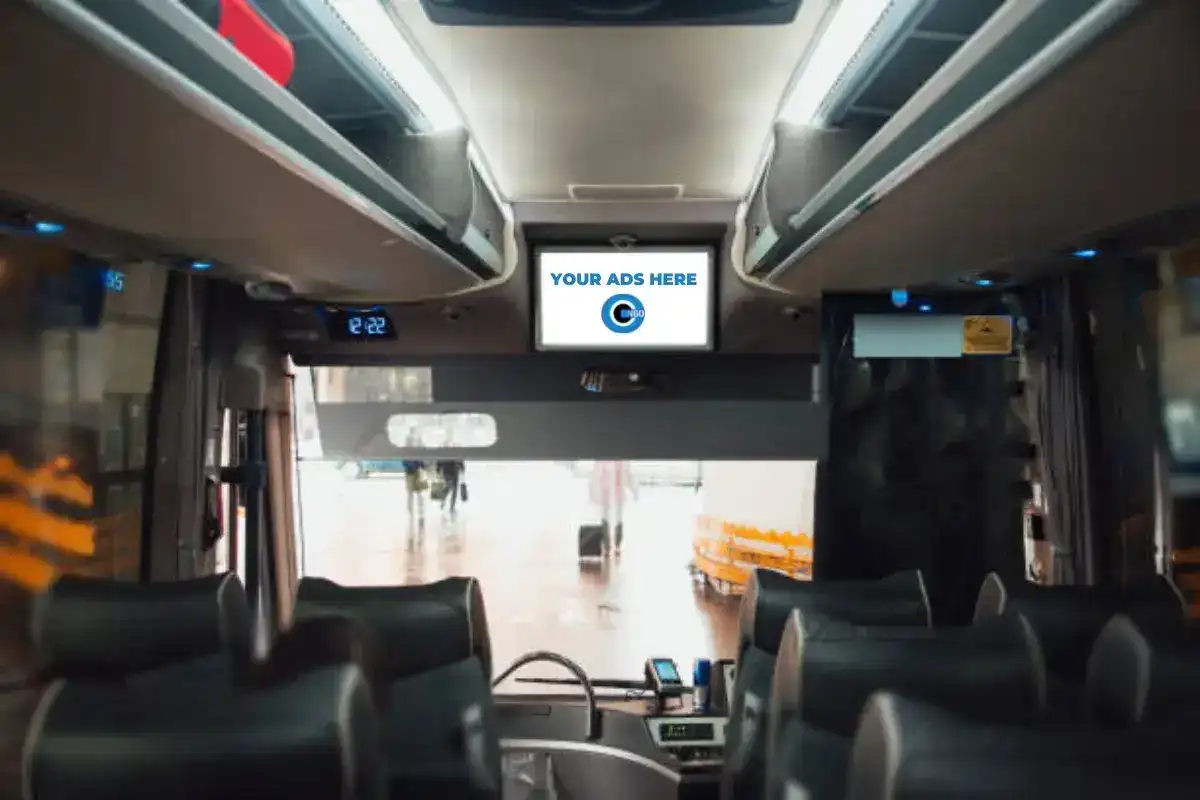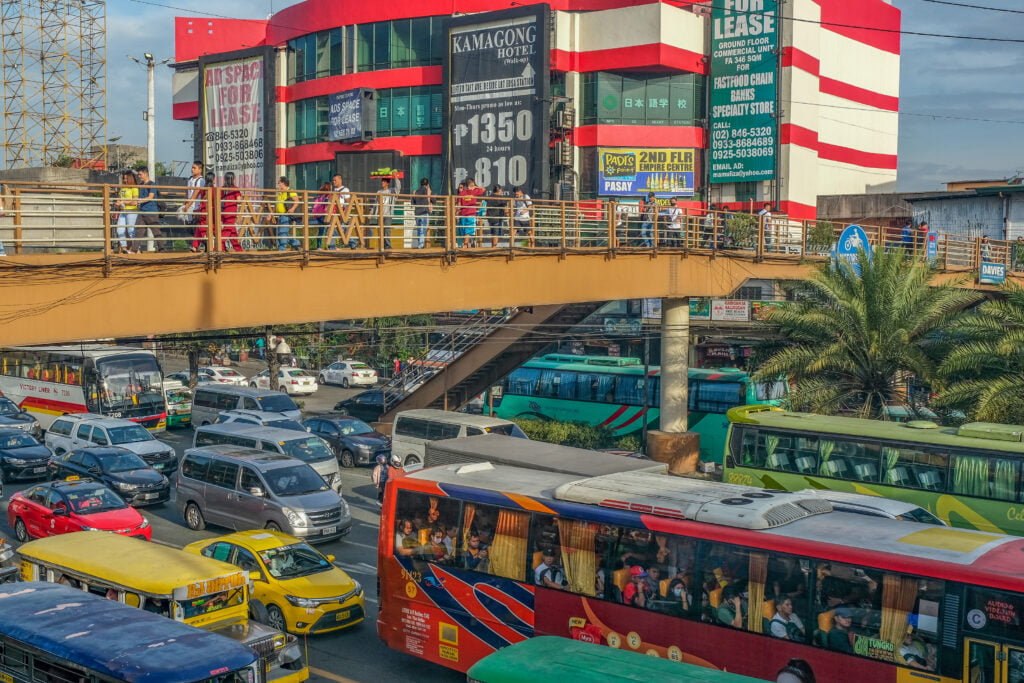Top Advantages of Transit Advertising Philippines for Organizations
Top Advantages of Transit Advertising Philippines for Organizations
Blog Article
Just How Transportation Advertising Can Change Mass Transit Spaces Into Dynamic Advertising Operatings Systems
Transportation advertising and marketing holds considerable capacity to redefine public transport areas into vivid marketing platforms that involve and notify. By utilizing cutting-edge formats such as interactive stands and digital displays, brands can not just get to a diverse audience yet likewise improve the total commuter experience. This method creates an one-of-a-kind opportunity for brands to connect with consumers in a setting that is typically forgotten. As we discover the multifaceted advantages and developing approaches of transportation advertising, it elevates the inquiry of exactly how this transformation can redefine our communications with both brands and the urban environment.
Benefits of Transit Advertising And Marketing

Additionally, transit marketing is extremely cost-efficient contrasted to standard media. It enables advertisers to accomplish high impacts at reduced prices, maximizing roi. The restricted audience of travelers provides a chance for brands to convey their messages to people that are often responsive throughout their travel times.
In addition, the dynamic nature of transit advertising and marketing allows campaigns to be upgraded often, guaranteeing that messaging continues to be appropriate and timely. This versatility can be vital in replying to market fads or promotional occasions, maintaining the brand name top-of-mind for consumers. Finally, the pervasive presence of transportation advertising adds to brand name recall; duplicated direct exposure within acquainted travel contexts strengthens brand name understanding and promotes consumer loyalty, inevitably boosting and driving sales brand credibility.
Kinds Of Transit Advertising
Public transport systems provide numerous formats for advertising, each dealing with different advertising strategies and target market engagement techniques. One popular kind is outside bus and train covers, which cover the entire vehicle and develop a mobile billboard effect, enabling high visibility in metropolitan environments. These wraps can capture interest as they pass through busy roads, getting to a diverse audience.
One more preferred layout is indoor advertising and marketing, which consists of posters, digital displays, and advertisements on transportation seats. These positionings involve travelers during their journey, enhancing brand name messaging in a restricted room. Digital shows, specifically, provide the benefit of dynamic web content, allowing marketers to update messages in real-time.
Terminal marketing is likewise considerable, featuring posters, banners, and interactive kiosks within transportation terminals. These ads leverage foot web traffic and can target particular demographics based on location.
Last but not least, advertising partnerships with transportation authorities can result in distinct projects, such as themed transit experiences or occasions, enhancing the general interaction with commuters. Each kind of transit advertising uses distinct advantages, enabling brand names to customize their method to effectively reach their target audience within the public transportation ecological community.
Engaging Travelers Successfully
Commuters are increasingly swamped with advertising and marketing messages during their day-to-day travels, making it crucial for brands to engage them in cutting-edge ways. To catch attention in this congested area, marketers should focus on creative thinking and importance. Using attractive visuals and succinct messaging can considerably improve the possibility of engagement.
Interactive elements, such as QR codes or augmented reality functions, can likewise change fixed ads right into Continue immersive experiences, promoting a much deeper link with the audience. Brands ought to concentrate on dealing with travelers' requirements and interests, tailoring messages to reverberate with their way of life, whether with promotions for local companies or solutions made to enhance their travelling experience.
Moreover, timing plays a vital role; purposefully positioning advertisements during height travelling hours can optimize presence and effect. Involving travelers properly additionally involves leveraging social networks assimilation, allowing passengers to share their experiences or promotions directly from transportation systems, consequently magnifying brand reach.
Basically, efficient involvement hinges on recognizing the traveler trip and creating compelling, interactive, and relevant advertising and marketing experiences that not only capture interest but additionally drive action and commitment. By doing so, brands can change mass transit into a dynamic advertising platform that resonates with its audience.

Measuring Advertising Influence
How can brand names properly analyze the performance of their advertising and marketing projects in transit settings? Determining the impact of transportation advertising and marketing requires a complex method that combines measurable and qualitative metrics. One prevalent technique is tracking engagement through mobile analytics, where brands can evaluate foot website traffic patterns and app communications before, during, and after projects.
Surveys can provide valuable understandings right into brand name recall and customer view, enabling brand names to gauge exactly how well their messages reverberate with commuters. Additionally, monitoring social media engagement pertaining to details campaigns can disclose shifts in public understanding and brand discussion.

In addition, teaming up with transportation agencies can boost dimension precision, as they commonly have in-depth group data on ridership trends. By integrating these approaches, brands can establish a comprehensive understanding of their marketing effectiveness, ensuring that their projects not just get to however additionally impact their target audiences successfully.
Future Patterns in Transportation Advertising And Marketing
A substantial shift is expected en route advertising as technological developments and transforming consumer actions improve the landscape. Transit Advertising Philippines. The integration of electronic displays and interactive media is anticipated to boost involvement, allowing brands to deliver dynamic content that reverberates with varied target markets. As public transport systems welcome clever modern technology, marketers will leverage real-time data analytics to customize messages based upon guest demographics and behaviors
Moreover, increased fact (AR) is poised to transform the means travelers connect with advertisements. By giving immersive experiences, AR can transform a mundane trip right into an appealing narrative that catches interest and fosters brand loyalty. This advancement will likely motivate advertisers to produce more experiential campaigns that drive customer interaction.
Sustainability is another important pattern affecting transit advertising. As environmental consciousness grows, brand names will increasingly seek to straighten with green practices, YOURURL.com utilizing lasting materials and promoting environment-friendly initiatives within their campaigns.
Verdict
In final thought, transportation advertising supplies substantial benefits by enhancing brand name exposure and involving a captive audience. As fads progress, the capacity for cutting-edge communications between commuters and brands is poised to expand, guaranteeing that transit advertising and marketing remains an important part of modern advertising and marketing approaches.
Transportation marketing holds considerable capacity to redefine public transport rooms into vibrant marketing systems that engage and notify. The prevalent presence of transportation marketing contributes to brand recall; duplicated direct exposure within familiar traveling contexts strengthens brand understanding and promotes consumer loyalty, eventually enhancing and driving sales brand name online reputation.
Just how can brands properly analyze the performance of their advertising projects in transit atmospheres?In verdict, transportation advertising and marketing supplies significant advantages by improving brand visibility and engaging a captive audience. Transit Advertising Philippines. As trends evolve, the possibility for innovative interactions between brands and commuters is poised to grow, guaranteeing that transit advertising and marketing stays a crucial part of modern-day advertising and marketing approaches
Report this page